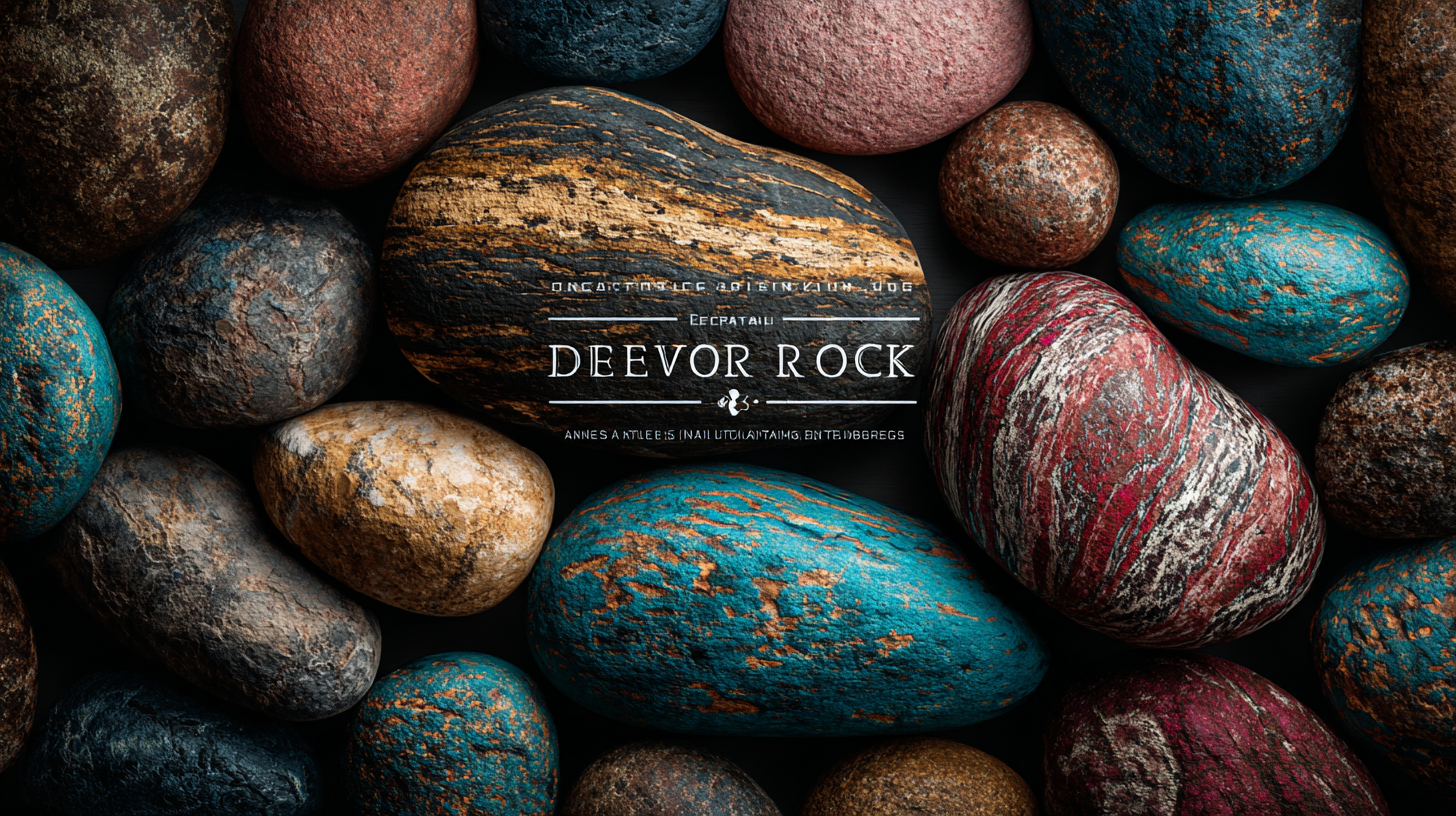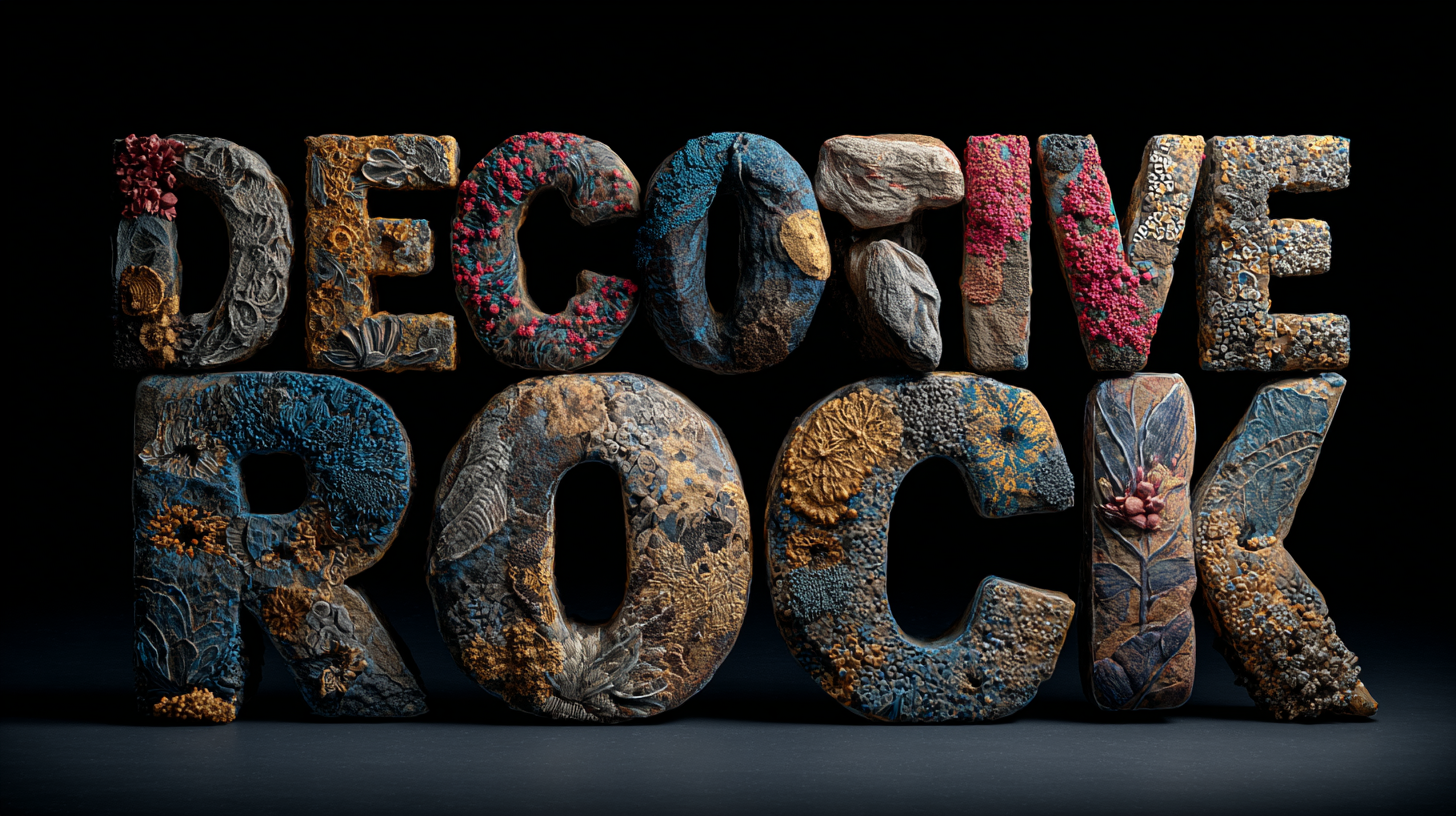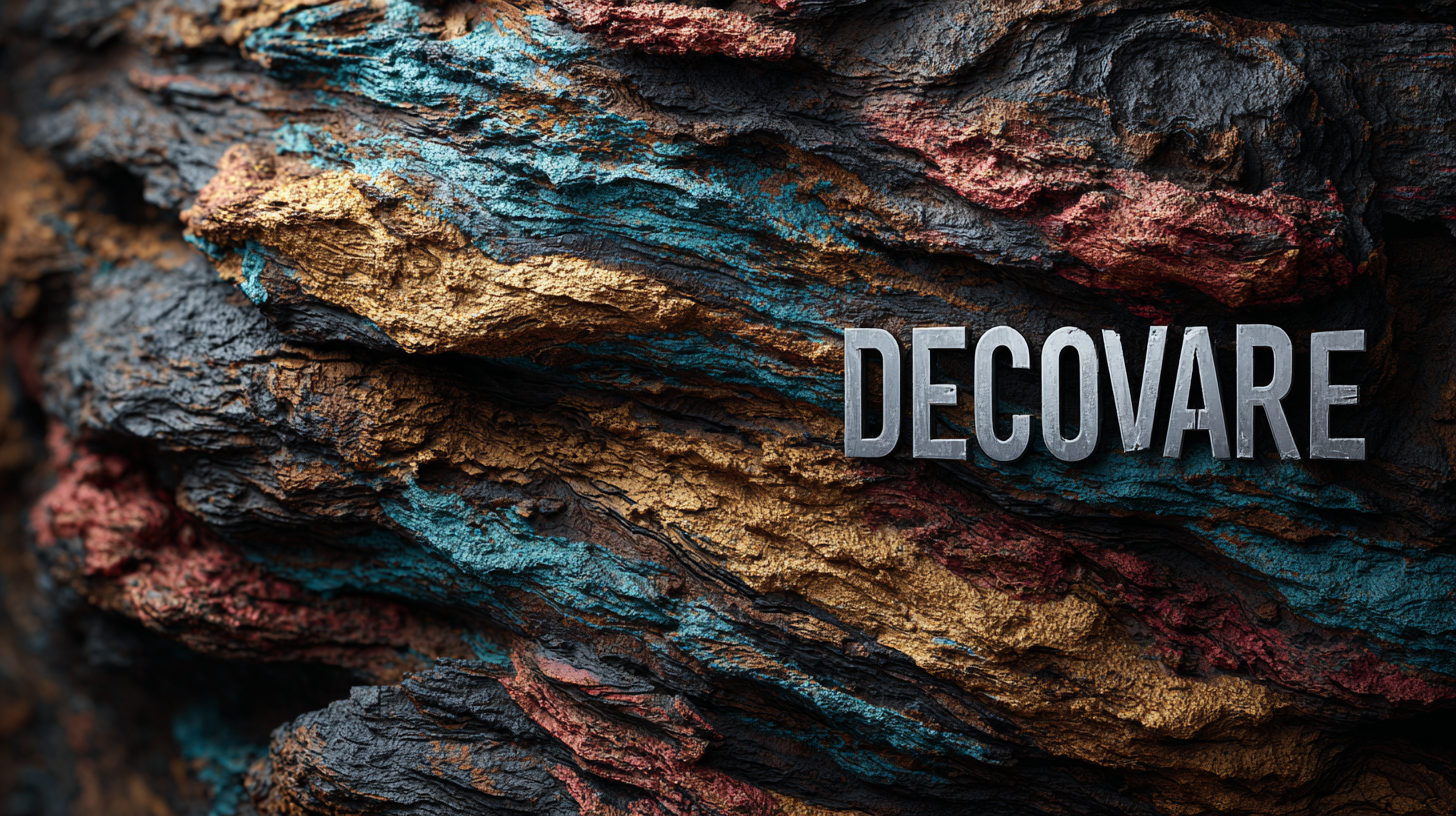Exploring Innovative Uses for Best Decorative Rock in 2025 Trends and Techniques
As we progress into 2025, the landscape of landscaping and design continues to evolve, with "Decorative Rock" emerging as a pivotal element in contemporary aesthetics. According to a recent industry report by the National Association of Landscape Professionals, the decorative rock market is expected to grow by 15% annually, driven by increasing consumer interest in sustainable and low-maintenance solutions. These versatile materials not only add visual appeal to outdoor spaces but also contribute to water conservation efforts and soil erosion control. This blog will delve into innovative trends and techniques in the decorative rock sector, showcasing how designers and homeowners alike can leverage these materials to enhance their environments while aligning with eco-friendly practices. From intricate installations to practical applications, the potential of decorative rock in modern landscaping is vast and exciting.

Exploring Decorative Rock: Market Growth Projections in 2025
The decorative rock market is poised for significant growth in 2025, driven by evolving consumer preferences and innovative landscaping techniques. As homeowners increasingly seek sustainable and low-maintenance alternatives to traditional garden materials, decorative rocks have emerged as a favored choice. Their versatility allows them to fit seamlessly into a variety of design aesthetics, from modern minimalist to rustic charm. Additionally, with an emphasis on eco-friendly practices, decorative rocks provide an attractive solution that reduces water usage while enhancing outdoor spaces.
Market projections indicate that the demand for decorative rock will expand as industries recognize its potential in both residential and commercial applications. In urban environments, decorative rock installations are being used creatively in public spaces, parks, and corporate landscapes, contributing to aesthetic appeal and environmental sustainability. Furthermore, advancements in extraction and processing technologies are making decorative rocks more accessible and affordable. As we look to 2025, the decorative rock segment is set not only to grow but to innovate, showcasing unique textures, colors, and applications that will delight landscape architects and homeowners alike.
Eco-Friendly Decorative Rocks: Sustainable Trends Shaping the Industry
As the focus on sustainability grows in the interior design and landscaping industries, eco-friendly decorative rocks are emerging as a top trend for 2025. These sustainable materials not only enhance the aesthetic appeal of a space but also minimize environmental impact. By choosing decorative rocks that are locally sourced and naturally occurring, homeowners and designers can contribute to reducing carbon footprints while supporting local economies.
When incorporating eco-friendly decorative rocks into your projects, consider selecting stones that require minimal processing. This approach not only retains the rock's natural beauty but also conserves energy. Additionally, opting for lighter-colored stones can help reduce heating costs by reflecting sunlight.
Another tip is to use decorative rocks in conjunction with drought-resistant plants. This combination creates a stunning visual appeal while conserving water resources. By designing landscapes that embrace natural elements, you can create a harmonious environment that showcases your commitment to sustainability.
Innovative Techniques for Rock Landscaping: Enhancing Aesthetic Value
As landscaping trends evolve, the integration of decorative rock has emerged as a pivotal technique to enhance aesthetic value in outdoor spaces. According to a 2023 report by the American Society of Landscape Architects, nearly 60% of landscape architects predict an increase in the use of decorative rock in residential and commercial designs, driven by its versatility and low maintenance requirements. The natural appeal of polished stones, gravel, and boulders not only adds texture to garden settings but also complements sustainable landscaping practices by reducing water usage in drought-prone areas.
Innovative techniques are also shaping how decorative rocks are utilized. For instance, the concept of "rock gardens" is gaining traction, wherein varying sizes and colors of stones are strategically arranged to create visually pleasing structures that mimic natural landscapes. A recent survey published by the Landscape Industry Association highlighted that over 40% of homeowners are now opting for rock installations that incorporate native plantings, further promoting biodiversity while offering an eye-catching design. Such approaches not only enhance the aesthetic value of properties but also contribute positively to the environment by utilizing sustainable materials.
Exploring Innovative Uses for Best Decorative Rock in 2025 Trends and Techniques - Innovative Techniques for Rock Landscaping: Enhancing Aesthetic Value
| Trend/Technique | Description | Aesthetic Benefit | Sustainability Aspect |
|---|---|---|---|
| Vertical Rock Gardens | Utilizing decorative rocks to create vertical landscapes. | Adds height and dimension to gardens. | Reduces soil erosion by stabilizing areas. |
| Colored Gravel Pathways | Using vibrant colored gravel to create eye-catching walkways. | Enhances the visual aspect of pathways. | Natural materials lower environmental impact. |
| Rock Mulching | Using decorative rocks as mulch in garden beds. | Improves soil temperature and moisture retention. | Reduces the need for plastic mulch. |
| Rock Art Installations | Creating sculptures and art pieces using stones. | Provides unique, personal touches to landscapes. | Encourages reuse of natural materials. |
| Water Features with Stones | Incorporating rocks to design ponds or fountains. | Enhances tranquility and attracts wildlife. | Promotes natural water filtration in ponds. |
Consumer Preferences in 2025: Analyzing the Demand for Decorative Rocks
As we look ahead to 2025, the demand for decorative rocks in various consumer markets is expected to surge, fueled by a growing appreciation for environmental sustainability and innovative design. Homeowners and landscapers are increasingly opting for these natural materials to enhance their spaces, aligning with trends that emphasize eco-friendly choices. Decorative rocks are not just limited to aesthetics; they play a significant role in improving soil quality and managing water runoff. This dual function has captured the interest of consumers eager to adopt sustainable practices in their gardening and landscaping efforts.

Furthermore, the exploration of new applications for decorative rocks is gaining momentum. From unique art installations to functional outdoor features like pathways and water features, designers are finding innovative ways to integrate these materials into urban and suburban landscapes. The rising trend underscores a shift towards personalization in decor, where consumers are more selective about materials that reflect their tastes and values. As the market expands, it will be interesting to observe how technological advancements in rock processing and distribution will influence consumer preferences and drive further innovation in decorative rock applications.
Technological Advancements in Decorative Rock Mining and Processing
The decorative rock industry is on the brink of a transformation, driven by remarkable technological advancements in mining and processing. According to a recent report by MarketsandMarkets, the decorative rock market is projected to reach $12.57 billion by 2025, highlighting the increasing demand for aesthetically pleasing materials in landscaping and construction. Technologies such as automated quarrying systems, advanced crushing techniques, and eco-friendly processing methods are reshaping how decorative rocks are sourced and utilized. Companies are now able to extract materials more efficiently while reducing their environmental footprint, addressing the industry's dual challenge of resource scarcity and sustainability.
Tip: Consider sourcing decorative rocks from suppliers that utilize sustainable mining practices. This not only supports eco-friendly initiatives but often guarantees higher quality materials, as these suppliers prioritize responsible extraction processes.
Furthermore, advancements in laser cutting and 3D modeling are allowing for unprecedented customization opportunities in decorative rock applications. As noted by the International Journal of Applied Earth Observation and Geoinformation, these technologies enable designers to create intricate patterns and shapes that were previously difficult to achieve, thus adding a unique touch to landscaping projects.
Tip: When planning a landscaping project, collaborate with designers who are skilled in these modern techniques to maximize the visual impact of your decorative rock features.

